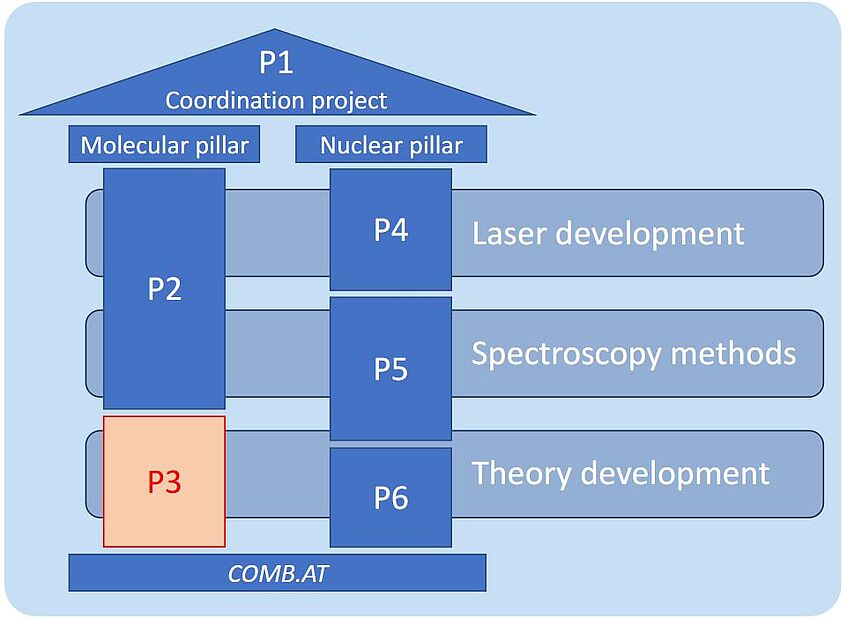P3 Interactions of Molecules with Twisted Light

P3 Interactions of Molecules with Twisted Light
The team of subproject P3 “Interactions of Molecules with Twisted Light” will advance the fundamental theory of molecules in the presence of electromagnetic fields carrying orbital angular momentum (OAM) and to provide direct theory support required for the successful realization of the P2 subproject.
Spectroscopy of small molecules is a mature field with a long history both in experiment and theory. Modeling of molecule–light interactions rests on two pillars: transition selection rules and independence of the internal degrees of freedom (rotational, vibrational, electronic) from molecular translational motion. Both of these assumptions stem from the fact that the spatial variations of the electromagnetic field on molecular length-scales can usually be neglected and it can be treated as a plane wave. While this allows to drastically simplify the theoretical modeling of molecular spectra and experimental assignment of spectroscopic lines, using light with spatial structure such as OAM can potentially offer clear advantages.
This is expected to open new avenues not only in precision spectroscopy, but also in controlling cold molecules and ultracold chemistry. The goal is to establish a general theory framework both for resonant laser fields (with applications to precision spectroscopy) and far-of-resonant fields (with applications for molecular alignment, slowing and trapping).
Apart from providing the theory support for P2, the team of P3 will have regular interactions with the theory group of subproject P6. The expectation is that the description of OAM beams, their interactions with charge distributions and the applicability of various approximations can be done jointly in the context of the molecular and nuclear spectroscopies.
